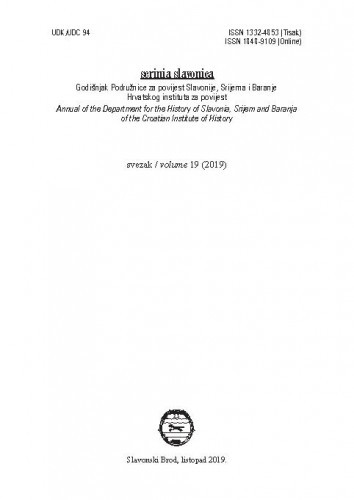U radu autor obrađuje ustroj, poslovanje i likvidaciju Dioničarskog društva slavonske vicinalne željeznice u vremenskom periodu od godine 1892., kada je društvo osnovano, pa sve do godine 1933., kada je završena njegova likvidacija. Sjedište društva u Austro-Ugarskoj Monarhiji bilo je u Budimpešti, da bi se odlukom njegove izvanredne glavne skupštine od 24. svibnja 1923. premjestilo u Zagreb. Pruge društva bile su sljedeće: Osijek-Našice, Našice-Nova Kapela-Batrina, Pleternica-Požega te Požega-Velika. Navedene privatne pruge bile su u državnoj eksploataciji, odnosno upravi. Temeljem sporazuma od 7. veljače 1931., država je otkupila pruge Dioničarskog društva slavonske vicinalne željeznice pa je tako prestao i razlog njegovog postojanja. Društvo je 1932. godine ušlo u proces likvidacije, koji je završio 12. travnja 1933.; This paper presents the structure, business activity and the liquidation of the Slavonian Vicinal Railway in the period from 1892 until 1933 when its liquidation was finalised. The headquarters of the stock company during the Austro-Hungarian Monarchy was in Budapest and based on the decision of the emergency session of its assembly from 24 May 1923 it transferred to Zagreb. The railway lines of the Company were: Osijek-Našice, Našice-Nova Kapela-Batrina, Pleternica-Požega and Požega-Velika. These railway lines were exploited i.e. managed by the state. During the Austro-Hungarian Monarchy the railway lines of the company were under the jurisdiction of the Traffic Administration in Pecs and in the Kingdom of Serbs, Croats and Slovenes / Yugoslavia they came under the jurisdiction of the Regional Board of the State Railways in Zagreb. Based on the agreement from 7 February 1931 the state bought off the railway lines of the Stock Company of the Slavonian Vicinal Railway and hence the reason for its existence ceased to exist. t. In 1932 the company entered the process of liquidation, the latter ending on 12 April 1933.
Sažetak

 Scrinia Slavonica : godišnjak Podružnice za povijest Slavonije, Srijema i Baranje Hrvatskog instituta za povijest : 19,1(2019) / glavni i odgovorni urednik Stanko Andrić.
Scrinia Slavonica : godišnjak Podružnice za povijest Slavonije, Srijema i Baranje Hrvatskog instituta za povijest : 19,1(2019) / glavni i odgovorni urednik Stanko Andrić.